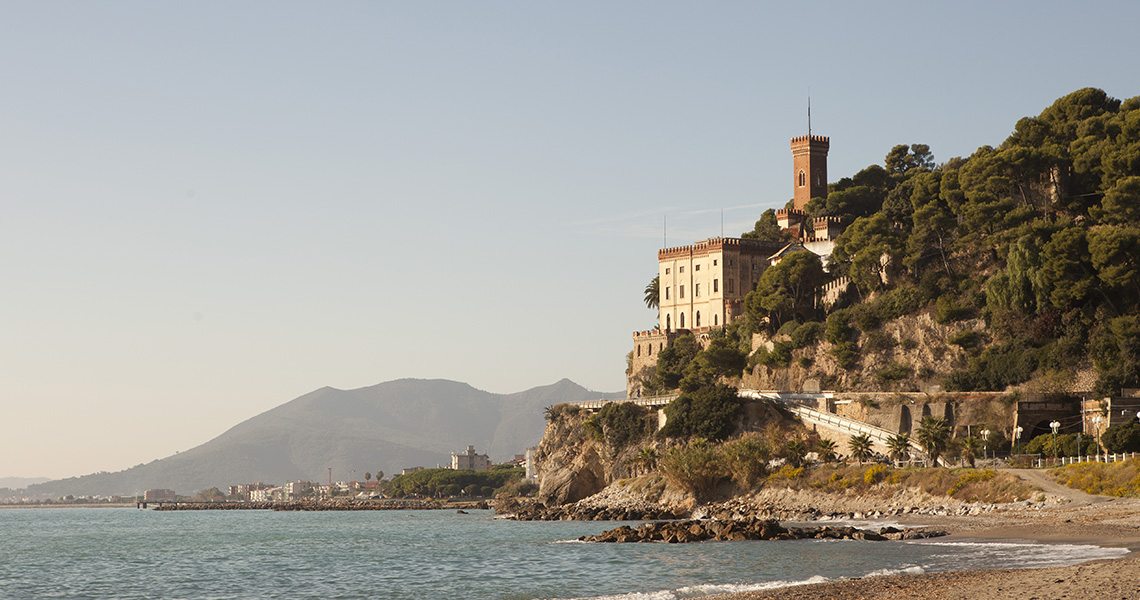omnisearch_title

- EN | IT
The Castle

Castello Borelli is not only a Castle
It’s a privileged location, a step before the sea, surrounded by the Piccaro green park.
It’s a resort full of exclusive services to experience in an oasis of personal wellness care.
The Historic Structure
Built in the last century (the construction started around 1870) by the engineer Borelli, the castle is a rare example of an historic residence made with the concept of housing and energetic self-sufficiency.
The construction complex presents itself as a residential-castle in neo gothic style.
The large group of structures develops both horizontally, along the sea, and in vertical, along the appendices of Mount Picasso, with a structured succession of housing units, coastal footpaths, stairs, turrets, and squares, finishing with a soaring watchtower.
Particular attention must be given to the rare rationalized and distributed water infrastructures, still fully functional.
Several Roman finds emerged during the excavation works, among which an altar dedicated to the Matron Goddesses, also a roman temple with coins, amphoras and remains of jars. In the Middle Ages, the location was occupied by Santo Spirito Monastic hospice, which gave the name to the village established in 1288 by Albenga municipality, in contrast to the city of Loano.
During the 1900s the building complex has undergone several changes mainly due to the different use of buildings and of the space around.
The Engineer Bartolomeo Borelli (Pieve di Teco 1829 - Borghetto Santo Spirito1905)
The Engineer Borelli was a railway engineer who collaborated with Germain Sommeiller to the planning of Frejus tunnel on the Torino-Leone line, built between 1857 and 871, he directed the excavation works of the south side from Serre la Voute up to the entrance of Bardonecchia. Borelli served as a Member of Parliament and, from 1892, as a Senator of the Italian Kingdom. He also held the office of municipal councilor to the town of Borghetto Santo Spirito, where he died in 1905.
The Location
An universal site of beauty, with enormous environmental and landscape potential, naturalistic and agroforestal heritage. The entire complex is surrounded by a beautiful park on which Borelli operated a series of interventions to safeguard the natural environment, through the recovery of the existing vegetation and ancient paths; the castle is also characterized by a botanic garden and the phyto-floral pool.
The location “overlooking the sea” allows a unique view of the most beautiful of the Ligurian coast.
The Resort
The project as a whole involves the construction of a luxury hotel with restaurant, wellness center, and, inside the walls of the castle, 47 residences with sea view equipped with the most exclusive construction features in terms of environmental wellbeing and building materials.
The Castle as hospitality and tourism, in synergy with the residential and service volumes, gives the complex a combination of historical and current inserted in an enviable and unique distribution ecosystem in Liguria.
